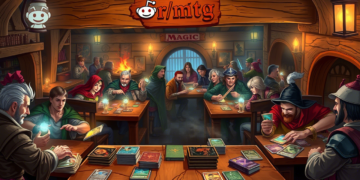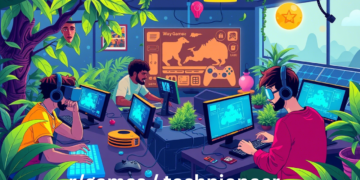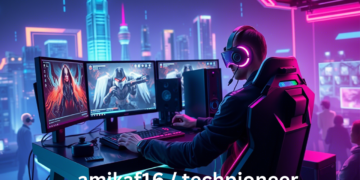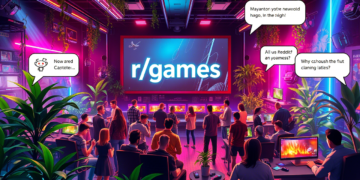The incessant demand for video games has fueled the need for translation, as game players have to understand games so that they can play, right? As translation is becoming more of a common phenomenon, there has been an evolution in this industry. Gaming translation services are not the only ones that are popular today; rather, machine translation is interchangeably used in translating games. However, there are also opposing statements on this, stating that translation tools can’t deliver the quality that humans deliver. And then come cultural factors upon which all debate becomes more heightened.
In this read, we are going to explore machine translation in detail and how they have evolved over the years. Other than that, our focus will be on whether these solutions can deliver culturally adaptable translation solutions in the gaming industry or not.
Machine Translation
Machine translation is a computer-based process that uses AI to translate text from one language to another. With the help of AI algorithms and machine learning, text is translated to convey the original message’s intent. The machine learning module identifies the text pattern and efficiently translates it. It also keeps translation memory, which stores previously translated text. It saves time, as in the case of repetition of words, time and effort on their translation is saved. These stored segments can be words, phrases, and even sentences. This money, so for small-scale businesses, machine translation is a great tool.
The most common example of machine translation that you have probably used is Google Translate. You just have to enter text and choose the language of your choice, and you get translated text in just a few seconds.
Machine Translation and Video Games
Use of machine translation in the realm of video games is completely different from its use in other industries. Translating a document with machine translation is something else, and using it for game translation is a completely different thing. Video games aren’t documents, and they don’t consist of text only. There are graphics, menu buttons, maps, and many other things. The use of game localization services is a traditional approach that is still used. Now not only is machine translation used alone but also with the amalgam of human translators. This brings creativity in translating video games and the power of both humans and machine learning algorithms.
The demand for rapid and cost-effective game translation and localization has increased the need for AI translations for video games. The main reason behind using machine translation models for video game translation is their speed and agility. Games contain large volumes of text, like instructions, objectives, and goals, which players need to understand so that they can complete quests and missions. Even in open-world games where game players have the liberty to freely roam in games and explore the landscape, players need to understand certain instructions. With machine translation, these instructions are accurately translated.
One of the cost-effective benefits of machine translation is that gaming companies don’t need to hire some translator for the translation task. Rather, game developers can use such tools and translate huge amounts of gaming text in no time. It this way, games can be translated during their development. It is upon developers, as they are not only in charge of game development but also of its translation.
Cultural Nuances in Video Games
Video games consist of cultural nuances and elements that make them distinct from other games. Games aren’t just about the game mechanics and gameplay but also the message and themes they showcase. This is why video games have such a huge impact on our society. Games are closely linked with our nostalgia and our culture. For instance, you must have heard about the game Minecraft. For you it’s a game, but for the players it’s a cultural phenomenon. This game has affected players and their emotions as well as changed the way we used to look at games in the past.
Video games are storytelling mediums that explain the story of not the game where it originated. Let’s talk about the Chinese AAA game, Black Myth: Wukong. This game represents Chinese mythology. This game consists of creatures, deities, and even locations that are deeply rooted in Chinese folklore. Chinese audiences can completely understand the cultural cues present in the game.
These cultural cues are the things that set a game apart and make it different from others. These cultural factors are a way to share something personal with the global audiences. Final Fantasy is a Japanese role-playing game that has kept game players on the edge with its true depiction of Japanese culture. Hence, you will find many examples of games that contain cultural factors that have truly fascinated the gaming audiences.
Is Machine Translation a Reliable Choice For Video Games?
For years, gaming translation services have accurately translated games and made it easy for diverse gamers to engage in these games and have an experience of their life. Machine translation is a very great option for translating huge games in no time and at less cost. When it comes to the cultural nuances, AI is not the best option. Despite the speed of machine translation solutions, their efficiency declines when it comes to culturally sensitive translations. The compatibility of machine translation with video games still remains a complex issue. Video game translation demands cultural adaptation, contextual accuracy, and linguistic creativity to provide an immersive experience. There is humor, slang, and many other elements that only human game translators are able to understand. This is why using machine translation models isn’t for video games, as they can ruin the whole player engagement.
Final Words!
To sum up, machine translation is great for translating large texts of games, such as manuals and instructions, but when it comes to cultural adaptability, even machine translation has its limits. It does save costs and allows gaming companies to use an in-house team for translation, but cultural context gets lost when machine learning models are used.































